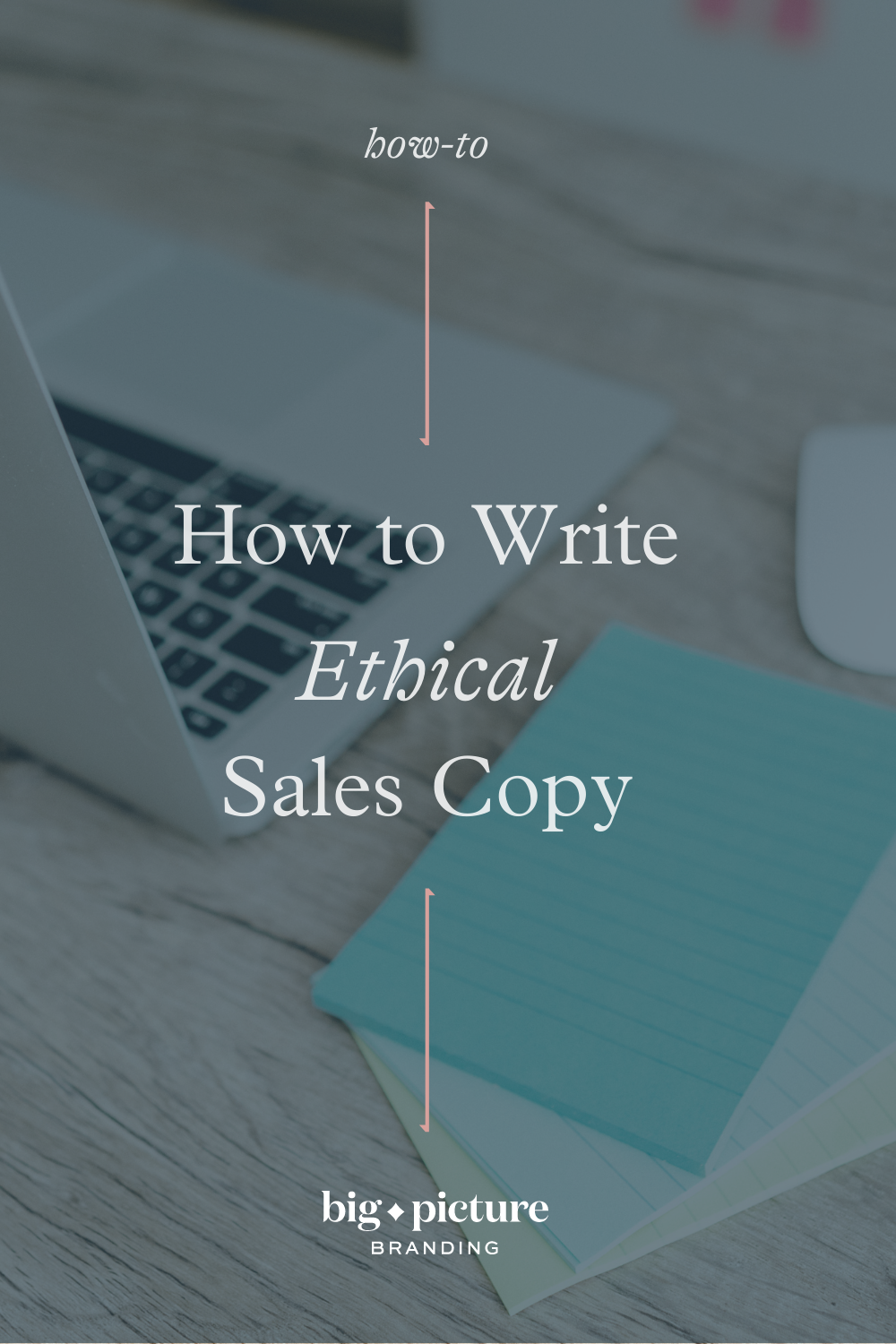Copywriting is a science and an art that takes time to master. There aren’t many shortcuts to good copy. It either works or it doesn’t. But sometimes, what works isn’t exactly ethical.
When we think about copywriting as a means to “capture” and “convert” (some pretty nefarious words,) well it’s no wonder marketers everywhere are toeing the line between selling and being sales-y.
Add to that, good writers know how to appeal to our psychology — it’s a well-known consumer marketing principle that we buy with our emotions and justify with logic.
Which is why every sales page will start by painting a picture of a possibility and then in a flick of an eye, switch to addressing any hesitation you may have — sometimes even before you’ve realized you had them!
Understanding your audience’s psychology is not an inherently bad thing. Understanding your clients and customers inside and out allows you to serve them better by offering targeted solutions to not just the problems on the surface, but those lying underneath, blocking the way for growth and success.
✏️Where we go wrong as product and service providers is when we use unethical copywriting and sales tactics to persuade our audience to act against their best interests in order to sell them something they don’t really need.
As someone who offers a service to prospective creative entrepreneurs, I’ve gone on the record to state my belief that you don’t need to hire a brand strategist or copywriter if you’re willing and able to spend the time DIY-ing your research and copy.
Especially, in the early days of figuring out your business. In fact, there is something really important in getting elbow-deep into your business before you start outsourcing work. You’ll gain a deeper understanding of your audience and direction so that when you’re able to bring in some outside help, you’ll have the confidence to make big decisions without hmm-ing and ha-ing over every participle and pixel.
So if you are in the DIY stage of growing your business, how exactly are you supposed to write a sales page without abusing your powers of persuasion?
The DOs and DON’Ts of writing ethical sales copy.
DO:
Get into your target audience’s frame of mind and ask yourself…
-
What compels someone to want to buy your product or service, at first sight?
-
Are their assumptions true or false?
-
If false, are you doing something to mislead them?
-
What are some of the honest benefits you can offer to alleviate their concerns?
-
How is your product or service going to make their life better?
-
What permissions are they looking for that is in their best interest?
DON’T:
-
Lie about or conflate the benefits of your product or service
-
Downplay your audience’s concerns
-
Pretend that you/your product is a cure-all
-
Talk your audience into something they don’t really need
[P.S. Here’s my post on 4 Unethical Copywriting Practices to avoid.]
Sample service and sales page sections
There are probably hundreds of sales page templates you could choose from. The order and narrative flow might change, but the core building blocks are always the same. As you build out your sales and service pages, use the following as your ethical copy guidelines.
1) Introduction
Grab your reader’s attention with a hook but don’t overstate your claim. Nothing says you’re selling snake oil faster than too-good-to-be-true time frames and promises of overnight success without hard work, experimentation, and many of failures.
Sections near the top of your sales page are a great opportunity to enrich your copy with important search terms and keywords, but write your copy first and then go back and audit. And for the love of coffee, never keyword stuff. It’s obvious, confusing, and an authenticity red flag.
2) Problem
As you begin to tell your audience that you understand their problems, remember that this section is all about connection. Be forthright with your audience and outline their problems without using scare tactics.
3) Agitate
Sections of copy where you’re reminding them how frustrated they are should be rooted in a genuine desire to make something better. You’re showing your audience that not every problem is as simple as it looks and you have the experience/expertise/skill to recognize that.
4) Reassure
Painting the picture of the future is my favorite section to write because 1) I don’t like to stay in the doom and gloom frame of mind too long and 2) this is the section all about positivity and good feels. However, as mentioned above, you never want to downplay your audience’s concerns or questions.
In fact, I would argue that challenging questions are a valuable opportunity to figure out how your product or process can be better and serve your audience in a stronger way the next time around.
5) Inform
Informational sections include bios, testimonials, stats, benefits, features, ingredients, and FAQs. Dishonest statistics or testimonials taken out of context (or edited to the point of distortion) are an ethical no-go. Be honest about your experience and don’t pretend to be someone that you’re not.
6) Solution
I doubt I need to say it, but never-ever-ever make false claims about the results of your product or service. Look at your word choices and consider where you might be over-exaggerating or giving the impression that something was more consequential than it really was. Toot your horn, but only where it is deserved.
TL;DR
In the end, it’s important to remember as you sit there pouring over your website or sales copy, to just be real. You got into this business for a reason. There is a purpose behind what you’re putting out there. Let it lead the way.
Look at your audience’s wants, needs, and desires as an opportunity to help and serve, not exploit.
You will be a stronger, more trustworthy business if you’re honest and transparent about your process and the value you bring to the table.
Trust that you can grow a business without the gimmicks.
PIN TO SAVE FOR LATER

